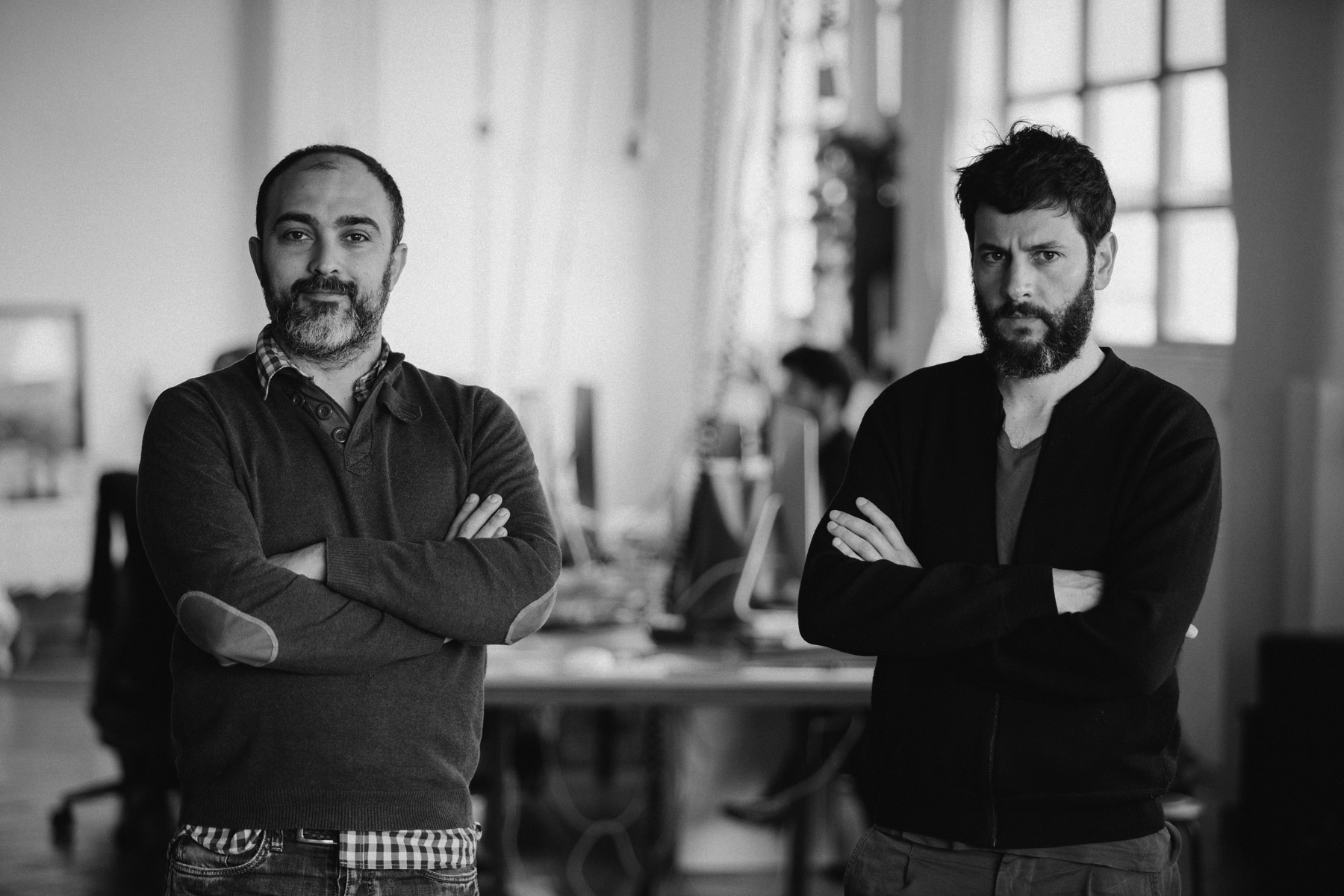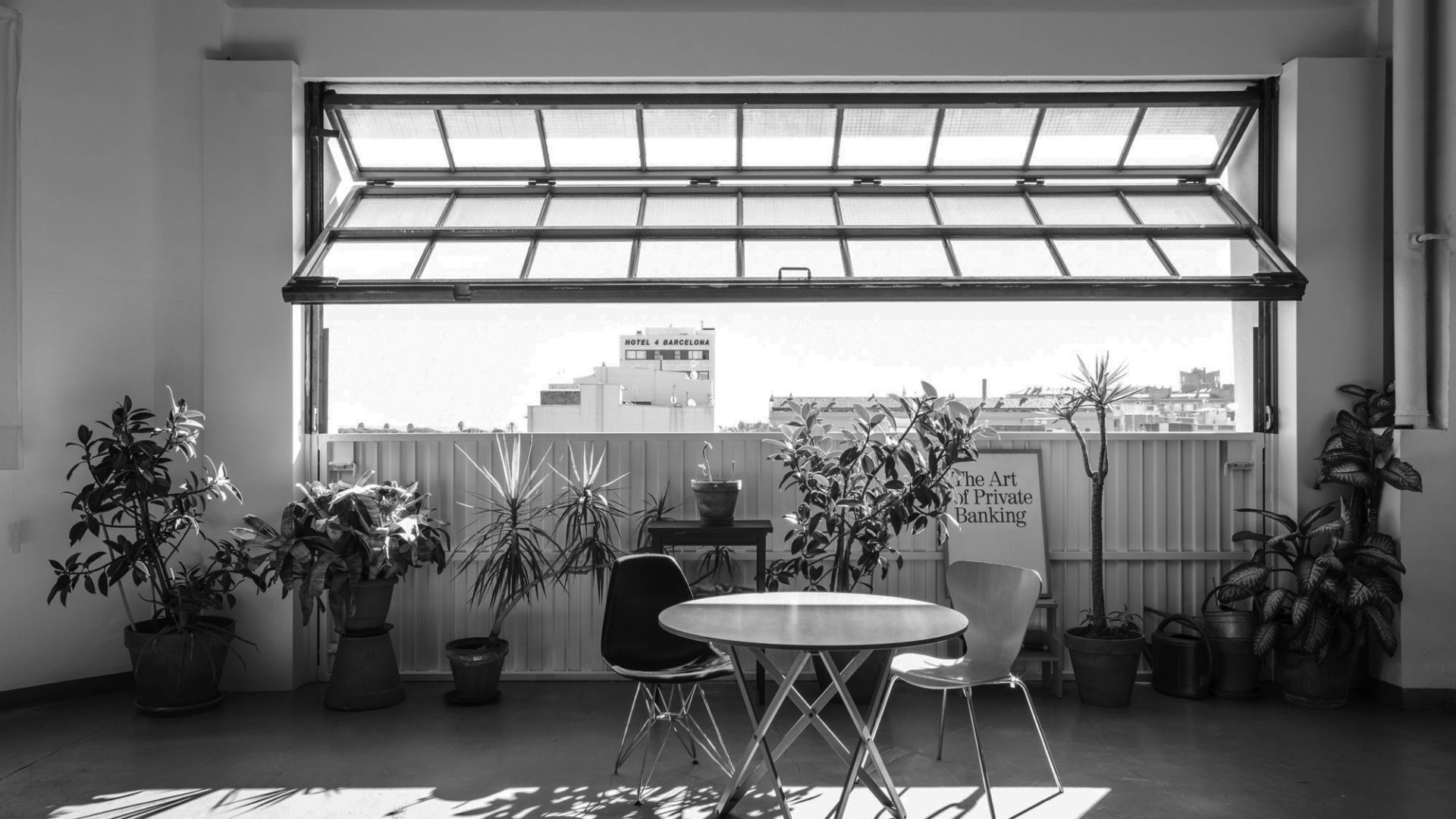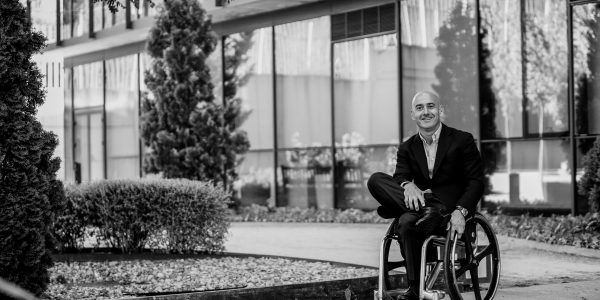While we were looking for the right partner to translate our values and goals into a model of identity and communication, we knocked on Folch’s door, an agency run by Rafa and Albert in Poblenou, Barcelona. Like us, they wanted to move the real estate sector from the outside in, humanizing it and creating a transparent and accessible environment that welcomes innovation.
The studio looks after a number of brands across different markets. Why do you think Metrovacesa started a conversation with Folch?
Rafa: For the same reason that many large brands have started to work with medium size studios at an international level; because they can give you evidence and a way of understanding communication that may be slightly different from a traditional agency approach. Large brands are looking for ambitious people who are able to connect with a special kind of sensitivity, or with a particular generation. The history of Folch in the interior design field, with projects like Apartmento Magazine as well as collaborations with Openhouse, gives us some familiarity with the private sector. This approach positioned us quite well in terms of branding Metrovacesa.
Albert: We asked ourselves, ‘Why did they choose us?’ I think they felt attracted by our less orthodox methodologies. Actually, during the presentation, it was already noticeable that our approach was going to be sui generis by the way we explained what we do and how we understand communication. We did not mince our words, we did not pretend to indulge them; we talked about reality in simple terms, and we believe that’s how it should work.
What was Metrovacesa looking for?
Albert: They had entered a new market and therefore they had to think of a name, an identity, and a strategic communication plan. They went public with a name that had an accumulated history, and we had to develop an identity and communicate a series of visions, values and products for the company.
Rafa: They also sought to radically change the image that is associated with real estate. They realized that, after everything that had happened in Spain in the last ten years, they needed to reposition the whole concept.
What do you think were the most critical points of that operation?
Albert: The reinterpretation of the concept of real estate, seeing it in a completely different way, was critical. This virtually meant repositioning the entire market. Since this is the company with the most planned homes in the next few years, the associated image was of the whole market and not just a single company.

Metrovacesa wanted to radically change the image associated to real state; they realized they needed to reposition the entire concept.
<h2>In what areas of rebranding has Folch been involved?</h2>
Albert: We had the capacity to make a change, but I believe that in our work we also need to know how to detect what must remain the same; we must know when to preserve what we already have.
Rafa: We added a strategic communication strategy that tries to define certain key areas of product commercialization. The big challenge was putting together a strategy that would allow for commercial success through fluid and accessible communication.
Albert: Basically, we highlighted a series of strong values related to the product that we wanted to associate with their new way of building and to understand their role in a society that has been punished and disappointed by the construction crisis.
<h2>An important part of the redesign has been through photographs and texts, plus a new brand narrative. How has this whole process been?</h2>
Rafa:Today what is often needed most is a redesign in terms of narrative. The complexity of products, services, values, and environments demanded a flexible approach. Apart from branding, we made a substantial effort to generate sales-oriented communication. We developed branding, not on the basis of graphic design but the other way around; thinking about how we were going to solve a sales problem and then how it would affect the company in terms of branding.
The big challenge was putting together a strategy that would allow for commercial success through fluid and accessible communication.
<h2>How did you transform those concepts and ideas into a visual language?</h2>
Albert: We responded to the post-crisis context from which the brand had come. Metrovacesa already had a logo, and we wanted to escape from a very logocentric execution of the brand. Real estate is always shown from the outside, for example, images with a tall building, vanishing points, renders etc. In this case, we used that kind of content on a secondary level because we wanted to get away from traditional branding. Instead, we focused on an internal, slanted image; it does not speak of a specific room, but speaks of life within the room.
Rafa: One needs to connect with clients in an emotional way because otherwise we will not understand their needs, their concerns. We had this in mind when we did the art direction for the photography, especially after Apartamento’s success. Once we understood interiors in that way, there was no turning back. The uninhabited and perfect spaces of the past, are no longer believable. I think showing the true reality of a space gives necessary credibility to the Metrovacesa product.
<h2>And what are the consequences of it in terms of the brand’s voice?</h2>
Albert: The same we did with the language and images of Metrovacesa. We did not talk about big numbers, big buildings; we talked about where and how people want to live.
Rafa: In the end we looked for a friendly, warm and sincere tone. We wanted to get away from the idea of a big company that sells a lot of products. We wanted to get closer to what motivates people, what they like, and what they may be interested in, so they can connect with it. That is the language we were looking for.
<h2>Metrovacesa has a corporate language, but also the possibility to use a more editorial language for the journal. What is behind this decision?</h2>
Albert: Metrovacesa is focused on advancing the sale of houses as much as possible through pre-order and reservation. In order for that to happen, it is necessary to provide a series of reports, such as talking about a neighborhood that is expanding or becoming popular, to make it clear that housing will be a good investment in a specific neighborhood. We needed a context in which to reveal this information and the journal was the right platform for this.
We focused on an internal, slanted image; it does not speak of a specific room, but speaks of life within the room.
<h2>How do you use content and how do we get to that content?</h2>
Albert: There is an example that explains it very well. We overvalue people’s intelligence. It was thought that building an airport in Castellon would take people to Castellon, but it has been proven not to. Having an airport in Alguaire does not bring people there to ski, you have to give people reasons to go and then build the infrastructures that are needed depending on the location. It’s the same in this case; before building the big ‘airport’ we have built a series of actions that give people the tools to be able to reach a website where they can find out more information.
<h2>You mentioned the new paradigm of communication, and that brands have transformed. What do you think brands have switched to nowadays?</h2>
Rafa: Rather than brands, what has transformed most is society, the way of perceiving reality and the way of relating to it. And that transformation has substantially changed the way brands communicate. Nowadays, each of us are, in a way, a brand, which changes the way we communicate.
Albert: Everyone is a medium for diffusion. Everyone has the capacity to reach other people – some more, others less – but a person can be very influential. This is something that must be taken into account in every factor of communication.
Rafa: Companies do not understand that the way to reach and expand is through the influence of people and not just the media. Many media outlets have even lost their influence in favor of a more fragmented way of communicating. Each person is a potential influencer, a potential brand, which must be seduced. Brand communication has to be oriented in that direction. We need to try to seduce with insight and with new information. At the end of the day, we are generating content so that people want to recommend us to a friend, to associate or to empathize with us. If we do not understand that, and if we continue to think customers are only there to buy a product, without taking the first step of empathizing, they will lose interest.
<img class=”aligncenter size-full wp-image-2163″ src=”http://metrovacesa.com/wp-content/uploads/2017/09/Folch_2017-twitter-2.jpg” alt=”” />
Everyone is a medium for diffusion. Everyone has the capacity to reach other people.
<h2>The case of Metrovacesa is interesting because it ceased its activities in 2009 and since then the economy has gone through a crisis and changed in many ways. Many companies feel the need to renew themselves by adapting to a contemporary model while maintaining their heritage, as in the case of Metrovacesa.</h2>
Rafa: My radical answer is this: companies that think they need to renew themselves are dead. On the other hand, companies that think they need to be transformed will see the light. Transforming means applying disruptive models and distinctive criteria. These days, the way people have to live, consume, share, collaborate and interact has changed in a substantial way. The general perception is completely different. I think, deep down, our work for Metrovacesa was exactly that: transformation rather than renewal.
Albert: To summarize, a company must project a different understanding of reality. That’s why Apple’s “Think Different” is so successful: if you don’t think differently you will not show a different understanding. And that is what Rafa was referring to, not to adapt, but rather to radically change your way of thinking and approaching your objective and audience.
Rafa: And that could be the answer to the first question ‘Why Folch?’ Maybe we are willing to say and do things that an agency that seeks to get linked into a company or a project ‘shouldn’t’ say. We have the courage to do it and say it, being well aware of its good and bad implications. I believe that many companies approach us because of our well-understood radicalism, as a sign of the need to transform companies. You can transform a company in terms of economic structure, communicative model, or design management. There are many ways to change, but what is certain is that companies need to <em>transform</em> to fit today’s reality.
Maybe we are willing to say and do things that an agency that seeks to get linked into a company or a project ‘shouldn’t’ say.
Related articles
Descubre promociones que te pueden interesar
Discover your new home with MiA
We have launched our virtual agent to help you find the property you are looking for.
Ask MiA and get personalized recommendations to find your dream home. Try it now!

